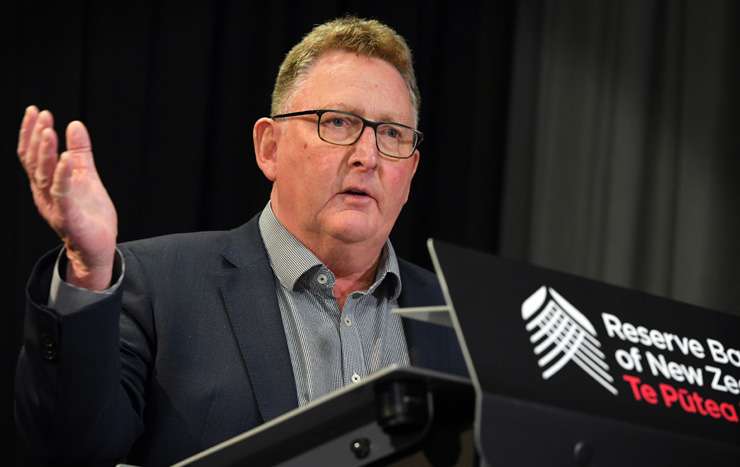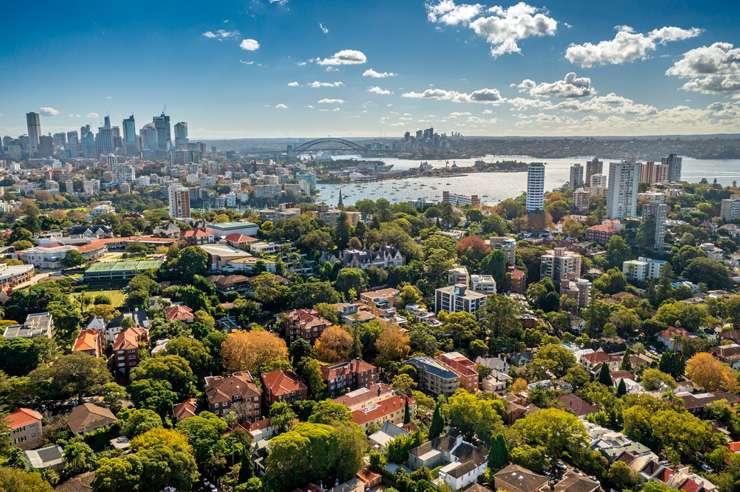The banks are falling over themselves to offer better mortgage deals, but those short-term gains for buyers and existing home-owners may be overshadowed by the gathering of storm clouds of a recession and rising interest rates.
The high street banks are ramping up competition, with ANZ and BNZ releasing headline grabbing rates. First the ANZ cut its two-year fixed home loan “special” from 5.8% to 5.45%, which takes effect on July 12. Westpac matched ANZ’s reduction and the BNZ followed suit quickly and undercut its rivals by dropping its two-year rate from 5.69% to 5.39%. BNZ is also dropping its variable rate from 6.29% to 5.99%.
The banks have also launched a cash-back war. Kiwibank kicked it off last month with an offer of 1% cash-back of up to $10,000. BNZ then upped the stakes on July 4, offering a cash-back up to $20,000 to borrowers who take mortgages out with it. Interest.co.nz has reported that other banks will offer cash back if customers ask.
Not every buyer will necessarily benefit from these cash-back rates because applicants need a 20% deposit to qualify.
Start your property search
The banks are lending less than they did a year ago, in part thanks to the changes made to Credit Contracts and Consumer Finance Act that came into effect in December last year. After an outcry by consumers, mortgage advisers and others, the Government announced it would relax some of the rules that punished buyers for their past spending habits. The amendments to the CCCFA came into effect on July 7 and most mortgage experts believe they will make life easier for first home buyers.
Interest rate pain
But it’s not all good news for buyers. ASB and ANZ have hit pause on low deposit lending, and experts believe the small respite low deposit buyers had been enjoying in April and May will soon come to an end.
The biggest cloud on the horizon is next Reserve Bank review of the Official Cash Rate. Between October 2021 year and May 2022, the Reserve Bank has lifted the OCR five times, from 0.25% to 2%. Two of those hikes were big - 0.5 percentage points each – and the Reserve Bank has been clear that it priority is taming inflation, which currently sits at 6.9%.
The big question for July 13 is: Will the Reserve Bank lift the OCR to 2.25%, 2.5% or even higher?

Reserve Bank Governor Adrian Orr. He has stated the priority is tackling inflation. Photo / Getty Images
Many homeowners have seen their mortgage rates jump in the last year, and many more who were on the ultra-low one-year rates of last year will come under financial pressure when they come to refix. Many have seen their mortgage repayments double in the past year.
Most economists have their money on a 0.5 percentage point rise, and most of the major lending banks have priced such a rise into their current mortgage rates, although there could be some small jockeying for position after the announcement.
ASB economist Mike Jones expects the Reserve Bank to put up the OCR by 0.5 percentage points on Wednesday and again on August 17. “We continue to expect a 3.5% OCR peak by year end.”
The other big banks are singing from the same hymn sheet. “We still expect the RBNZ to lift the cash rate by 50bps to 2.5% [on July 13],” says Jeremy Couchman, senior economist at Kiwibank.
In a speech to the National Property Conference last week, RBNZ chief economist Paul Conway reflected on the effect of the RBNZ’s work in recent months and how its interest rate decisions had affected house prices.
Conway’s speech garnered a lot of headlines. He said that “the tide may well have turned against housing being a one-way bet for a generation of Kiwis” and noted that “affordability” and “sustainability” in house prices weren’t the same thing. Even though house prices were seen as unaffordable for a long time, they remained high until rising interest rates finally put a halt to the runaway freight train.
New Zealand not alone
Many of the problems New Zealand is facing - rising interest rates, rising inflation and a struggling building industry – can be seen in other countries.
Australia, for example, has just hiked interest rates for the third month in a row to 1.35%.
Where New Zealand does diverge from other countries is in its house price to income ratio, according to RBNZ research released along with Conway’s speech. “The RBNZ’s comparison demonstrated just how out of kilter New Zealand’s housing market is,” Couchman said. Demand has been supercharged in New Zealand since the GFC, thanks to low interest rates and the strongest population growth among developed nations.

An aerial view of Sydney. Australia’s Reserve Bank has just put up its OCR. Photo / Getty Images
“NZ’s unfavourable comparison seems hard to reconcile,” he says. “We have low population density and land isn’t in short supply. It seems NZ’s ability to convert resources into much needed housing has been severely restricted for years. As the RBNZ’s paper showed, NZ’s building cost inflation tops the list. Most likely due to overly restrictive local government development rules, and the structure of the building sector. The current plasterboard fiasco that builders are struggling with appears to be yet another symptom of a broken market.
“At the same time, the supply of new housing has not responded fast enough. The result is the highest real house price gains since the late 2000s relative to comparable countries.”
On the subject of building, Westpac’s acting chief economist Michael Gordon says a “perfect storm” is hitting Australia’s residential construction sector. “Profits are being squeezed by rising costs and a large backlog of projects on fixed price terms; compounded by an aggressive RBA [Reserve Bank of Australia] tightening cycle and a sharp slowdown in housing markets.”
Here in New Zealand the ANZ is predicting a 6% fall in house building.
Recession on the horizon
Like other countries New Zealand is also at risk of recession. The ASB’s economics team, for example, says the risks of a hard landing continue to increase. The NZIER’s Quarterly Survey of Business Opinion (QSBO) was released this week and was grim reading, with business owners seeing a dire outlook.
Companies’ general business confidence fell to -65, a two-year low. “On its own, this points to recession in the second half of 2022 (if not already).” the ASB said in its daily economic note. ANZ’s Miles Worman dubbed this “inflation blues”, made worse by labour shortages. The retail sector is the least confident in the QSBO survey.
Kiwibank is calling it a crisis of confidence, with both business and consumer confidence weakening. The ANZ-Roy Morgan consumer confidence index plunged 1.8 points to 80.5 in June, just a few points above the record low (77.9).
Consumers, business and the government are looking to the RBNZ to see how it will handle the economic pressures faced by the country. “The trade-offs facing the RBNZ are stark.” says Mark Smith, senior economist at ASB.
“Recession looms but ensuring inflation will eventually settle to generally acceptable levels (i.e. around 1-3%) should be the RBNZ’s key priority. With inflation showing few signs of cooling and capacity pressures intense, the path of least regrets for the RBNZ is still to [move swiftly ].” ASB expects OCR cuts to start in 2024, with the rate eventually moving down to more “neutral levels” of 2-2.5%.
Anyone who ever buys groceries or petrol will know that inflation is running hot. In fact it’s at a 30-year-high in New Zealand and set to get worse. The QSBO survey recorded a net 76% of companies increasing selling prices in the three months to the end of June, the highest such rise in decades.
This is not just a problem for New Zealand and Australia. Inflation in the UK is even worse, having hit 9.1%, the highest rate in 40 years. It is expected to rise to 11% later this year and the Bank of England is expected to raise its base interest rate, the equivalent of the OCR, to as high as 3% by the end of 2023.
















































































